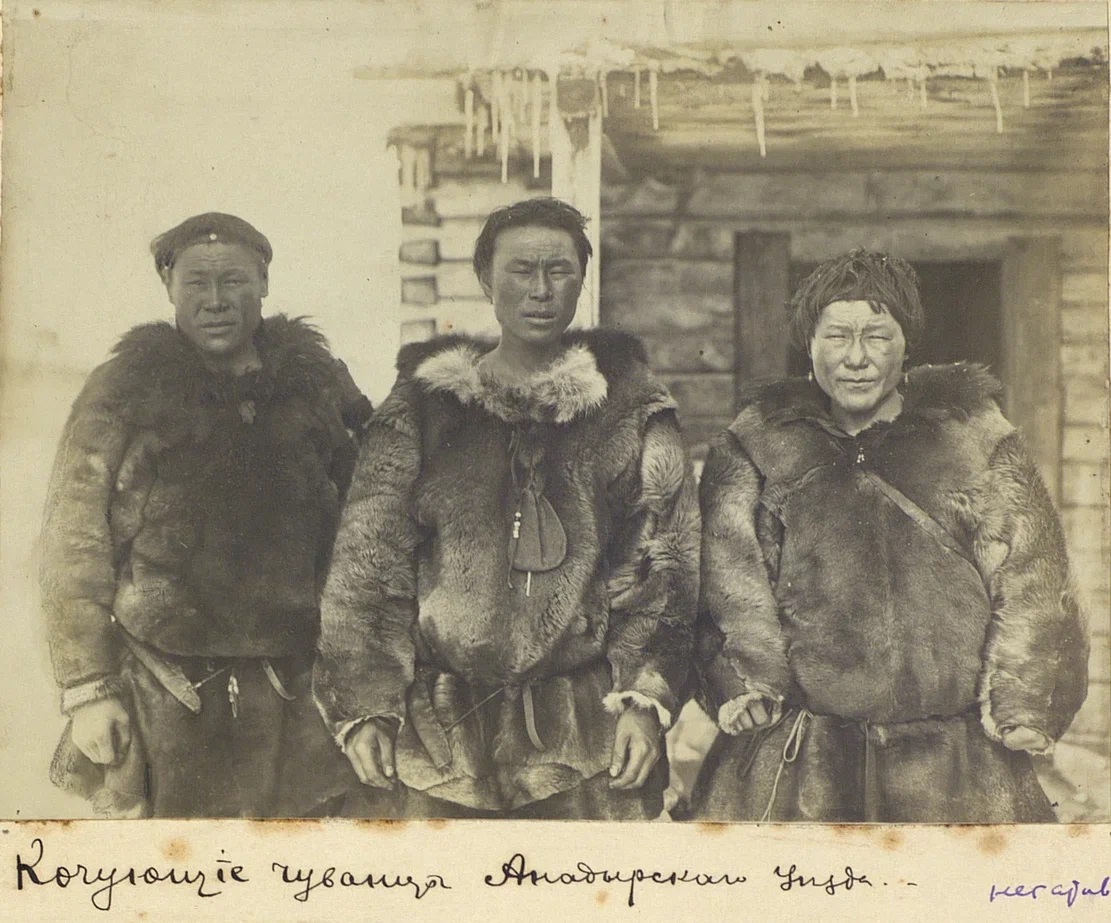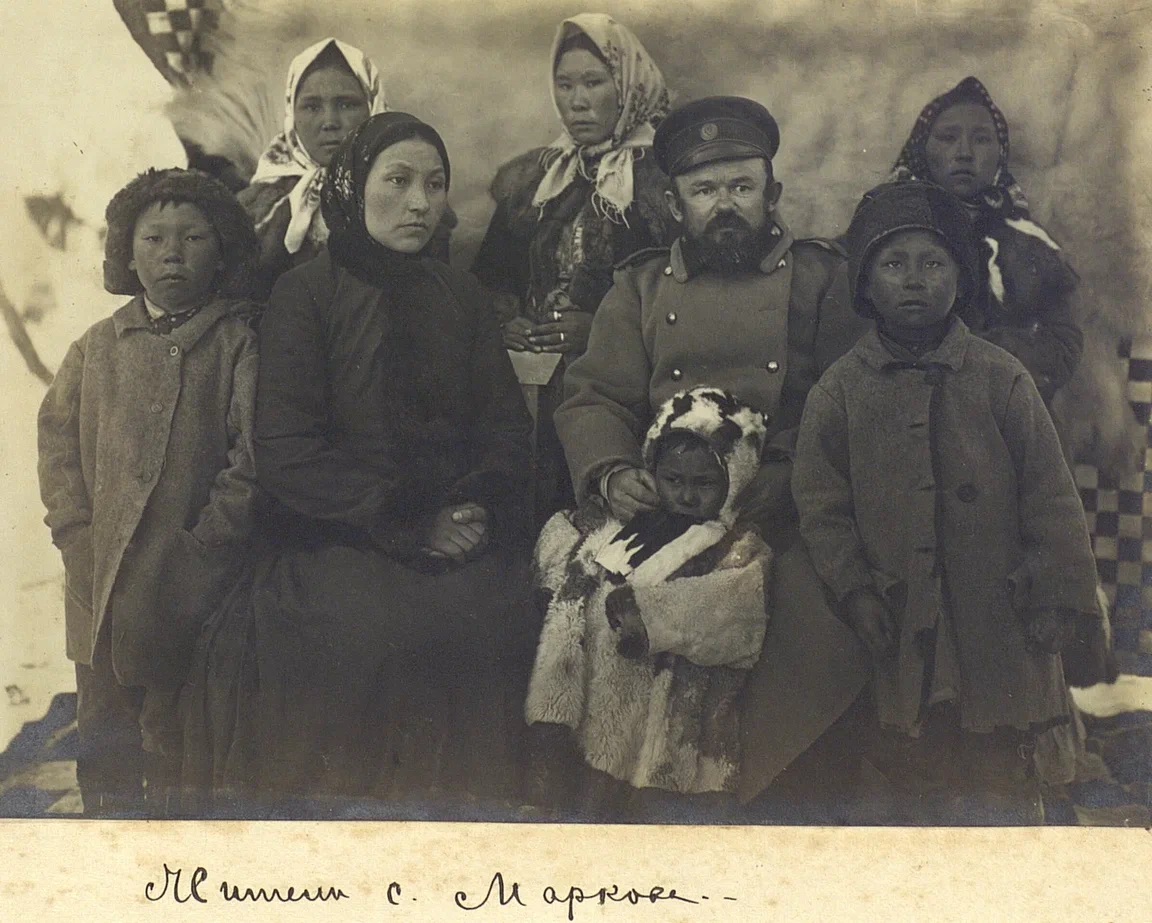Dr. Davydova
Research Fellow, Arctic Research Center,
Museum of Anthropology and Ethnography, Russian Academy of Sciences
The Chuvans.
General information (endonyms, ethnographic groups, population according to the latest census, settlement)
The 2010 census recorded 1.002 Chuvans in Russia, while the 2020 census recorded 900 Chuvans with most of them (742) living in the Chukotka autonomous area.
Chuvans are an indigenous people of the northeast of Siberia. Currently, they live in settlements in the middle and lower reaches of the Anadyr. Their native tongue, which had probably been closely related to Yukaghir, is now considered to be lost.
Previously, they used the endonyms
etel’ / etal / atal
derived from Yukaghirs’ endonym
odul
lit, meaning “a person.”. Additionally, the Chukchi called reindeer herding Chuvans “those from a different tribe, strangers, enemies,” and they called settled Chuvans “those from a different Yukaghir tribe.” The ethnonym “Chuvans” appeared in written sources since the mid-17
th
century when Russian explorers arrived in the northeast of Siberia. There are various etymologies suggested for this term: from the Yukaghir
chavul
(“a sea”),
chavundi
(“a person living on the coast”). There are also etymologies derived from the toponym
Chaun
, from the Chukchi-Koryak
chavchyv
(meaning “a reindeer herder, owner of domestic reindeer”).
Chuvans comprise two ethnographic groups, settled (who live primarily along rivers and own sled dogs,) and nomadic (mountain Chuvans, who are often reindeer herders). These two groups differ significantly not only in their occupations but also in their culture and language. Settled Chuvans are primarily fishermen and their culture had taken its shape in interactions with Russian Cossack explorers. Nomadic Chuvans are reindeer herders who assimilated the traditional lifestyle of their neighbors, the Chukchi and Koryaks. Originally, both groups mostly likely spoke a dialect of Yukaghir. It had been an unwritten language that was completely lost by the mid-19
th
century. Nomadic Chuvans spoke Chukchi or Koryak. Settled Chuvans spoke a unique dialect of Russian, the so-called “Markovo sub-dialect” characterized by soft mellifluence and certain patterns for eliding the endings of many words in speech. Currently, the Markovo sub-dialect is extinct as a means of communication, but some of its elements are still an ethnic identification marker for settled Chuvans. The division into settled and nomadic Chuvans can be seen in different last names. Most nomadic Chuvans have last names derived from Koryak or Chukchi names (Kievka, Valchirgin, Kievlen, Keyetegin, Tavrygirgin, Tytkhiv, Tynagirgin, Ryltel, Iatgirgin, Roltyrgin, Chaivurgin, etc.), while most settled Chuvans have their last names derived from Russian Cossack names (Sharypov, Sobolkov, Shitikov, Alin, Diachkov, Sozykin, Ushakov, Meduchin, etc.).

Nomadic Chuvans, 1897–1907.

Settled Chuvans, residents of the village of Markovo, 1897–1907.
“Reindeer owning” Chuvans took the convergence between “river Chuvans” and Russians as something alien. Consequently, nomadic Chuvans came to be reputed the “real” ones. Scholarship assumed a similar approach. For instance, Nikolay B. Vakhtin, Evgeny V. Golovko, and Peter Schweitzer in their article consider Markovo Chuvans as an ethnographic group of Russian Siberians and believe that significant confusion comes from applying the common ethnonym “Chuvans” to both the nomadic group and the settled group. Descendants of both groups today self-identify as Chuvans, and one can view their origins and ethnic history through the lens of long-standing ethnic and cultural interactions and mutual influences.
The question of the Chuvans’ settlement area is quite interesting. For a long time, scholars hypothesized that this group lived across a rather large area that, in addition to the catchment area of the Anadyr, spanned the land east of Chaunshaya Bay and the coast of the Arctic Ocean. This hypothesis, however, remains insufficiently substantiated to this day.
Semyon Dezhnev was the first to mention Chuvans in his records in the 17
th
century somewhere in the vicinity of Anadyrsk (an
ostrog
, a fortified settlement on the Anadyr). At that time, Chuvans lived along the right tributaries of the Anadyr, mostly between the rivers Main and Yablon, and small groups roamed around the Bolshoy Anyuy drainage system and between the rivers Belaya and Tanyurer. In the mid-18
th
century, Chuvans’ settlement patterns changed radically mostly owing to the Chukchi raiding, snatching property, and taking over hunting areas. Those Chuvans who had lost their reindeer settled on the Anadyr close to Anadyrsk, and when the
ostrog
was eliminated in 1771, the remaining Chuvans were relocated to Gizhinsk on the Kolyma, and most Anadyr Chuvans settled along the rivers Bolshoy Anyuy and Maly Anyuy. This migration did not affect some reindeer herding Chuvans who had not suffered from the raids and continued to roam their original territories. Some of them roamed around the rivers Belaya and Yeropol, while others roamed the Yablonoi mountains among Koryaks. In the early 19
th
century, Chuvans began coming back to the Anadyr, and by the early 20
th
century, the majority of nomadic Chuvans were in the upper reaches of the river Penzhina and along the tributaries of the Yeropol and Yablon; those with few reindeer roamed along the tributaries of the Belaya. Settled Chuvans mostly lived in three villages - Yeropol, Markovo, and Ust-Belaya.
In the Soviet era, Chuvan settlement patterns changed again. As the authorities forced these groups to switch to the settled way of life, nomadic Chuvans were relocated to the village of Chuvanskoye. Some families moved to the village of Novo-Mariinsk (the city of Anadyr). As of 2023, Chuvans of the Anadyr district live in the city of Anadyr (307), and in the villages of Markovo (301), Ust-Belaya (97), Chuvanskoye (85), Vayegi (33), Lamutskoye (13), Kanchalan (10), Krasneno (4), and Meinypilgino (1).
























































